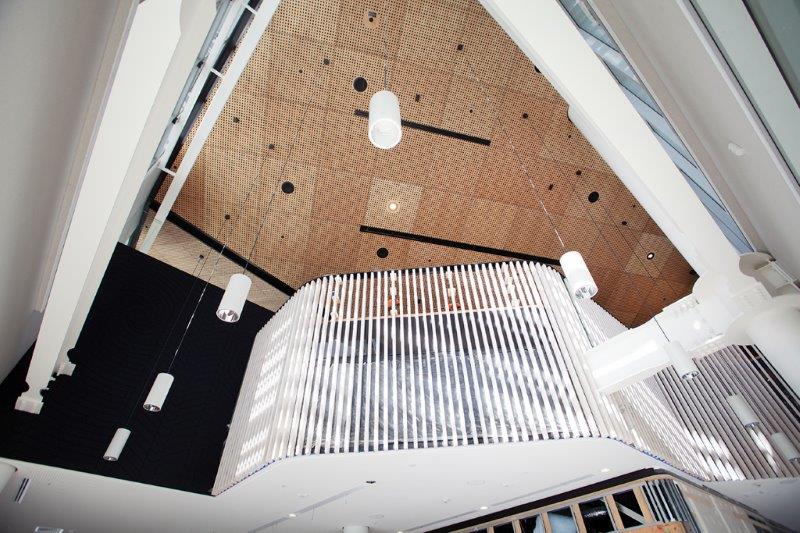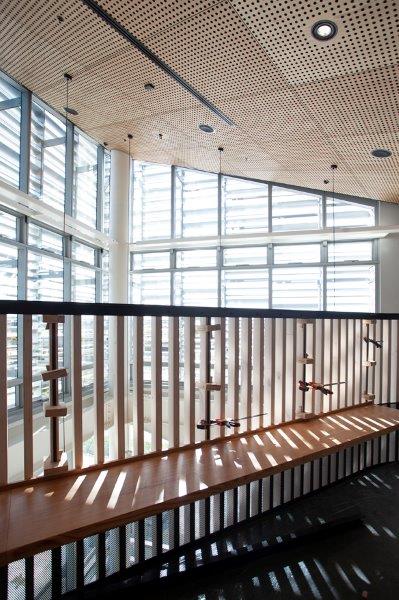
Te Ara Ātea is built using practices and systems that lessen the impact on the environment. We have used renewable and recyclable resources and materials in the construction. Care has been taken to reduce waste and energy consumption to protect the natural environment around the site.
Its design considers environmental, social and economic factors. This reduces the impact on the environment, respects human health, recognises cultural values and keeps running costs down. As such, Te Ara Ātea is an accessible, comfortable and healthy building. Furthermore, the sustainable design is long-sighted, ensuring low running costs through energy efficiency.
The building is fitted with LED-lighting throughout, each entity with a minimum 30,000-hour life span. This results in low energy consumption and maintenance costs.
Multi-function sensors are used in Te Ara Ātea to measure environmental parameters such as motion, occupancy, light levels, temperature and humidity. This information feeds into the automatic control of lighting, shading and access. This system minimises hardware requirements and costs and gives the highest performance level possible.
 As a part of sustainable design philosophy, natural ventilation is utilised to save energy consumption. This minimises the building’s operational costs. The building is able to manage and utilise outdoor air and heat to modulate the inside temperature and ventilation. In winter, for example, cold fresh air is heated by the warm stale air being expelled from the building. The converse occurs in summer.
As a part of sustainable design philosophy, natural ventilation is utilised to save energy consumption. This minimises the building’s operational costs. The building is able to manage and utilise outdoor air and heat to modulate the inside temperature and ventilation. In winter, for example, cold fresh air is heated by the warm stale air being expelled from the building. The converse occurs in summer.
On the upper level, external solar shades create a pleasant light quality, retaining natural daylight and views.
The indoor-outdoor flow has been well thought out with large sliding doors allowing the indoor spaces to open out into the town square. The large windows are carefully placed to create strong visual connection with the surrounding landscape and to the distant views of the Southern Alps and the Port Hills. The windows are also positioned to draw in the scent of the vegetation into the building when the mixed mode ventilation is in use.
At Te Ara Ātea, the heating load is significantly lower than the cooling load. That is atypical for Canterbury, which tends to have even loads for heating and cooling. This is due to the insulated thermal envelope performing well, increasing comfort and reducing heat loss.